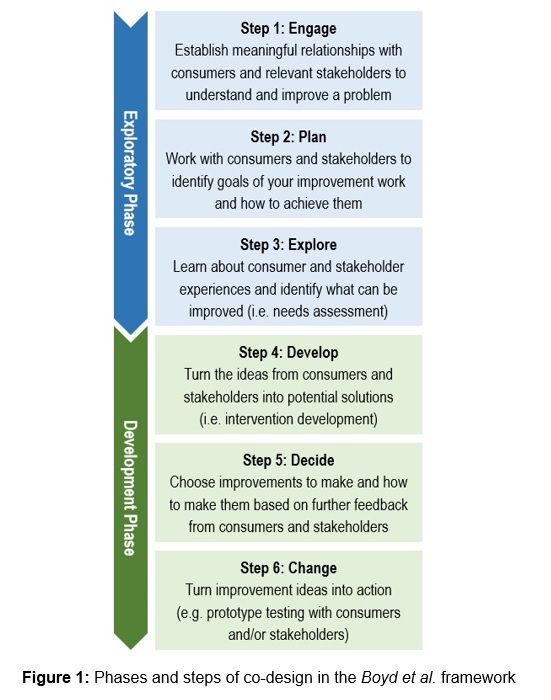Poster Presentation 33rd ASM of the Australian & New Zealand Bone & Mineral Society 2023
Integrating Post-Fracture Care into the Primary Care Setting (interFRACT): Phase 1 Results of a Mixed-Methods Co-Design Study (#239)
Objectives: To develop the interFRACT care pathway to enhance diagnosis/treatment of osteoporosis and improve initiation of fracture prevention strategies for older adults in the primary care (PC) setting.
Methods: This mixed-methods study uses an established co-design approach (Figure 1). Phase 1 involved developing a Stakeholder Advisory Committee (SAC) to guide study procedures and outcomes; interviews with 15 GPs and 20 consumers (older adults >50 years with osteoporosis and/or fragility fracture) to explore beliefs and attitudes toward osteoporosis and fractures; and a scoping review to investigate current approaches, needs and barriers to osteoporosis and post-fracture treatment within PC.
Results: The SAC was developed and includes 2 GPs; 1 geriatrician; 1 fracture liaison nurse; 1 exercise physiologist; 2 representatives from the Fragility Fracture Network and Musculoskeletal Australia; and 5 consumers. Analyses of interviews showed that most GPs gave low priority to osteoporosis and saw other medical conditions as more important; consumers also shared this view. Most GPs felt confident in managing osteoporosis, however consumers perceived their care as inadequate and felt GPs lacked knowledge in non-pharmacological treatments (e.g. exercise). Noted as the “acute-PC divide”, GPs desired better collaboration with hospitals and commonly spoke about delayed or poor-quality communication. Both groups made suggestions of how osteoporosis and fracture management could be improved in PC. Ninety studies were included in the scoping review, which identified several key themes: Lack of GP knowledge; Low osteoporosis diagnosis and treatment Rates; Interventions to Improve Osteoporosis Diagnosis/Treatment; and Barriers to Osteoporosis Management.
Conclusions: These findings have allowed us to gain an understanding of consumer and GP experiences and needs within PC. Phase 2 will include a series of co-design workshops with the SAC to develop the interFRACT care pathway using phase 1 results, and a feasibility study with GPs to determine the usability/acceptability of the care pathway.
